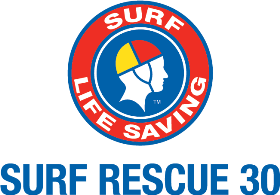Our History
The Randwick District Offshore Rescue Boat (callsign Surf Rescue 30), traces its origins quite literally back to the "summer of 69" when a group of visionary volunteer surf lifesavers recognised the need for a specialist craft to operate beyond the traditional patrolled beaches of Malabar, South Maroubra, Maroubra, Coogee and Clovelly and utilize the teachings and philosophies of surf lifesaving to save lives. A plan was hatched by these "trailblazing" lifesavers and a support base built at Malabar on Sydney’s eastern beaches (interestingly the construction of the current base was assisted by prisoners from Sydney’s Long Bay Correctional Centre). This is the present location of the Surf Rescue 30 base. Malabar is an ideal location not only because of its central position but being a deep and protected ocean bay it affords Surf Rescue 30 direct access into the Pacific Ocean
The original craft chosen was a jet rescue boat or “JRB” as they became colloquially known. This vessel was powered a single V8 "chevy" engine connected to a Hamilton three stage jet unit. The key advantage of this set up was that the rescue craft could access the surf break to assist patients. With an overall length of approximately 6 metres, the craft offered speed and maneuverability in the surf with the craft having a search and rescue duration of up to 6 hours. Operational areas with shallow waters or beach breaks is where a jet system is unmatched – in fact the craft once on the plane could operate quite comfortably in a in water depth of only 10cms allowing it to easily traverse over sandbanks during rescue operations.
The Randwick District, comprising the four surf life saving clubs being; South Maroubra, Maroubra, Coogee and Clovelly operated three such jet rescue boats between 1969 and 1994. The first two were known a "Smiths" and the third was a Mutimer jet boat and they served Sydney Branch Surf Life Saving and the Randwick Communities well on the beaches during this period. In fact, jets boats still perform valuable rescue work in areas where there are lengthy coastlines and shallow and treacherous bar crossings. The absence of underwater appendages inherent with water jets allows these boats to operate close to shore and in shallow waters.
In 1994, with the increasing use of Inflatable Rescue Boats (or "Rubber Duckies" as they are affectionately known), there became less of a need for a specialised jet boats for patrol work in a white water aquatic environment. This did not mean there was not a need for a specialist volunteer rescue craft. Rather the craft needed to be "fit for purpose" and the days of jet boats were clearly numbered in Randwick.
So what craft was assessed as “fit for purpose”?
The Randwick Coastline is in fact a treacherous but spectacular rocky and cliff coastline punctuated by a series of smaller beaches. What was called for was a stable craft to provide beyond the break assistance for the traditional beach lifesavers and lifeguards and access to the deep coastal bays and remote rocky cliffs. Key for this task was reliability, stability and safety and so began the transformation with the use of twin hull vessels know as “Cats”. These craft are fast, fuel efficient and offer maximum space with close to the maximum beam running from bow to stern. The craft operate beyond the break but are small and nimble enough to get close to the coastline when required.
In 1992, the Randwick District purchased its first Offshore Rescue Craft cat, a 6.5 metre Noosa Cat which we operated until retiring it out of service in 2002. This craft was succeeded by the “City of Randwick II” a second generation Noosa Cat custom designed for surf lifesaving operations and which remained in service until 2010. Our current craft is a 6.5 metre state of the art KevlaCat specifically customised to suit surf lifesaving rescue requirements. This craft is powered by twin 150 horsepower Yamaha 4-stoke motor and is "state of the art" in terms of design and construction. It carries a variety of paramedical equipment including an oxy viva; defribrillator; soft pack first aid kit; stokes litter; spinal stretcher and collars; rescue tubes; basic tow rig; Penthrane; and basic dive equipment supported by trained volunteer Lifesavers. It carries enough fuel to permit at least a 10 hour tasking and operates with a trained crew of three. Since our inception in 1969, the Group has been tasked to well in excess of 1000 missions. Our motto is "safer beaches, safer coastline, safer lives"

